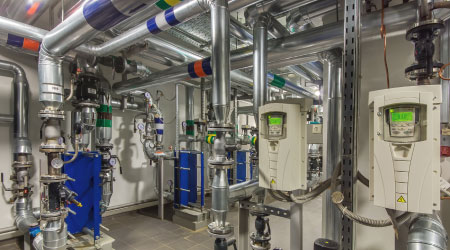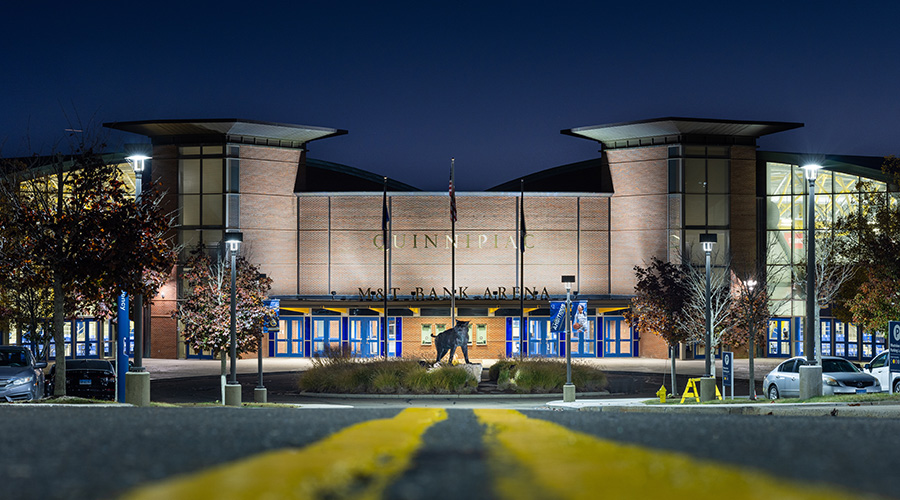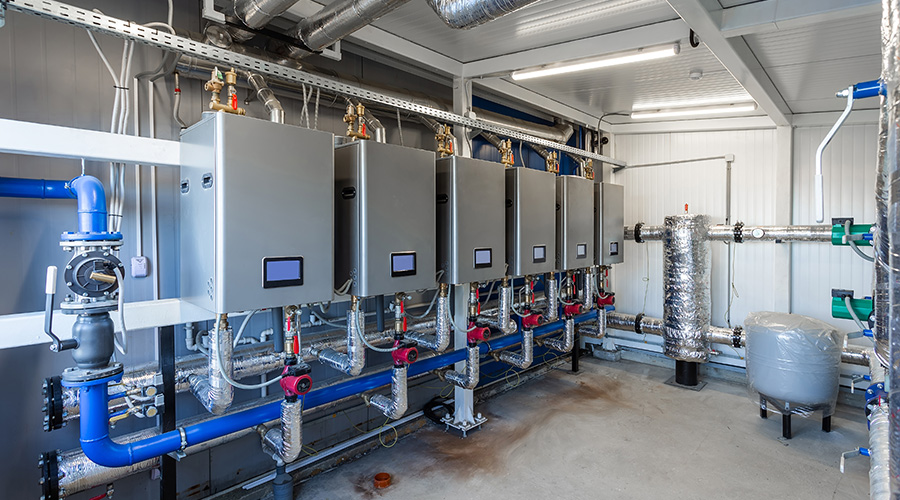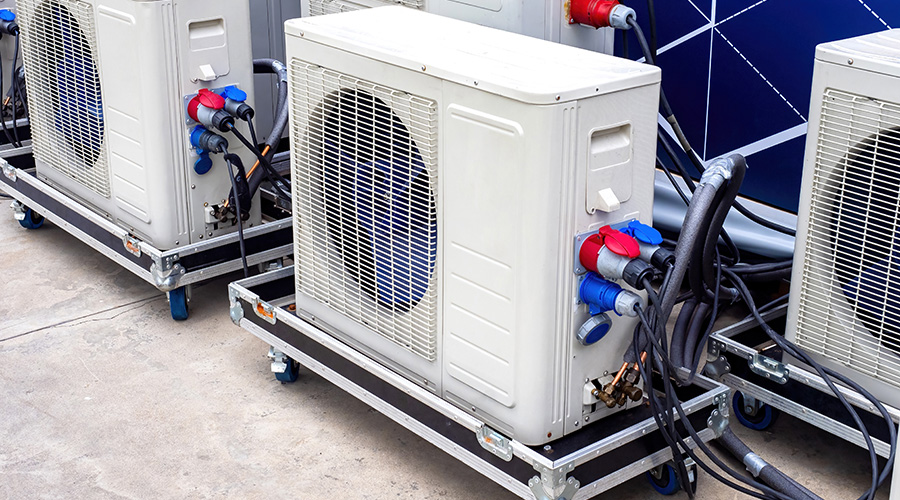How to Make Long-Term Boilers and Water Heaters Selections
Higher-efficiency boiler and water heater products give managers many different options when selecting new systems.
Maintenance and engineering managers seeking to reduce carbon footprints and improve energy efficiency at their institutional and commercial facilities understand that boilers and water heaters play a critical role in achieving that goal.
Informed designers can use the flexibility of modern hydronics technology to craft systems that allow heat pumps to operate at peak performance. The confluence of these trends for electrification, building heating and cooling load reduction, and heat pump technology “presents an unprecedented opportunity for use of modern hydronics technology, one that could significantly increase market share and better meet consumer expectations,” says Kevin Freidt, director of product management and technical services for Caleffi North America.
The growing availability and increasing efficiency of air-to-water heat pumps will significantly influence the market for hydronic systems, Freidt says. Most heat pumps can provide chilled water for cooling. This characteristic alone opens many opportunities that were previously impractical.
High-efficiency condensing water heaters to match existing load versus mid-efficiency models should reduce BTU input by up to 10 percent.
“Evaluation of DWH loads when replacement is required typically shows unit capacities can be reduced, thus lowering carbon footprint,” says Mark Croce, senior product manager for PVI.
Key considerations
Since a high-efficiency boiler is a costly, long-term investment, upfront costs should not be the primary metric driving managers during the specification process.
Managers might pay a premium for condensing boiler systems that offer industry-leading warranties, smart and connected controls that help achieve the highest efficiency possible or advise when there is an issue, and ensure condensing occurs when conditions are right.
“Investing in such solutions with the aforementioned features can accelerate ROI and yield higher savings and dividends for many years to come,” says Nery Hernandez, senior product manager for AERCO International Inc.
The key to a successful boiler or water heater replacement project is having a clear understanding of the objective before work begins.
“Whether facility managers are focused on pre-heat, ice-melt, hydronic heating throughout the building, heating domestic water, or any other objectives, the end goal has a tremendous impact on which product should be selected,” says Mike Juhnke, application manager for Lochinvar.
Part of the specification process is to ensure that the equipment is properly sized. Over-sizing leads to higher up-front capital spending and long-term operating expenses, and under-sizing domestic hot water heaters can have a negative effect on business operations, “especially during peak usage periods,” says Dan Giosia, assistant product manager-specialty products for Bradford White. “It’s always recommended for facility managers to seek assistance from commercial water heater and boiler professionals to ensure that their systems are sized appropriately for their specific application.”
Managers need to focus on several key considerations in matching boiler and water heater options to their facilities' needs.
For water heaters, the building load needs to be evaluated and the system resized from the original unit to make sure it will meet the load requirements. Systems use a different paradigm for sizing and will often have more storage than the water heaters they are replacing. It is also worth measuring hot water use to ensure that replacement systems are properly sized.
“It is common for older systems to be oversized,” says Brian Cummings, product manager for Watts’ Lync System Solutions. “As the cost for adding additional capacity in fossil fuel systems is less than that of heat pump technologies.”
On the boiler side, the main concern for managers is the water temperatures of the new equipment might not match those of the equipment being replaced. Managers must examine the entire heating system, not just the heat source, to ensure that the building’s heat demand will be met.
“These units have some key changes from traditional equipment, and it is strongly recommended that facilities partner with a manufacturer who has experience from the start and examine the facility’s needs in order to ensure success,” says Andrew Macaluso, Lync product manager.
Vital information
Before embarking on a replacement project involving new-generation boilers and water heaters, managers must understand the daily hot water requirements in their facilities by knowing how often and when their peak water-use periods occur.
"Managers also need to know the available installation space and the location of the installation, as well as available utility services and air exchange, and possible ductwork locations,” says Paul Pohl, product manager for commercial new product development with A.O. Smith.
Understanding the specific needs of an application, as well as the type of application, is critical for managers as they determine which new technology is the best fit for their buildings.
“The type of product they need can be dictated by a variety of factors, such as knowing if they’re going to need storage tanks or how much water their application will use on a daily basis,” says Charles Phillips, technical training manager for Lochinvar.
It is also important for managers to understand how new and existing technologies differ from each other. New equipment might require additional training for in-house personnel, but the overall maintenance load is not significantly higher with this equipment.
“Aspects such as equipment location and footprint can be different, thus necessitating a complete study of how best to apply technology,” Macaluso says. “Most high-efficiency equipment will cost more at the onset but will pay back over time because of its efficiency. It is very important that facilities managers evaluate this into the cost of the overall system and present the full picture to their managers.”
Managers should also be familiar with additional enhanced features of the equipment, such as building management integration, powered anodes, and advanced diagnostics.
“Building management integration links functionalities of individual building equipment so they can be monitored and controlled as one integrated system,” Giosia says.
Performance monitoring and remote control ensure proper energy consumption and save money. Powered anode systems on tank-type water heaters are designed to increase the tank’s life span.
“They ensure that the tank of the water heater is protected from corrosion in high usage demand and adverse water quality conditions,” Giosia says.
Facility managers can be assured that water heaters are more protected against typical and atypical water conditions and usage patterns. Also, advanced diagnostics within boiler and water heater products “can greatly reduce downtime,” Giosia says. “Prompt turnaround for troubleshooting and maintenance result in quicker returns to normal operations, which everybody loves.”
Matching options
Managers need to weigh several important considerations when matching boiler and water heater options with their facilities' needs.
Based on the fixtures in the facility, the main focus is to provide the peak demand of hot water, which might be an instantaneous flow rate for tankless or an hourly usage for storage-type systems. This will ensure that the systems have adequate hot water.
Another focus is space.
“Currently, we are seeing more and more facilities trying to reduce their footprint,” says Dale Schmitz of Rinnai America Corp. “They may also want to focus on cost of maintenance or replacement in the future. The tankless engines provide easy serviceability, and any part can be changed out with a Phillips-head screwdriver.”
Managers might consider using an electric boiler as an additional system boiler to take advantage of off-peak power pricing and total carbon reduction.
“Additionally, if a heating system has capacity in excess of what is required, use of a heat-exchanger package to generate domestic hot water may be a beneficial solution to eliminate the need for additional fuel or electrically operated equipment,” says Sean Lobdell of Cleaver-Brooks Inc.
Unlearning inaccurate information about new-generation boilers and water heaters can be just as important as learning what is right.
“There is a myth that persists that high-condensing boilers are unreliable and require more maintenance than traditional boilers,” Hernandez says. “This is simply not the case. In fact, new-generation boilers come with warranties that may be double or better than past boilers.”
This is possible due to advances in heat exchanger materials. For example, 439 stainless steel and intelligent controls can mitigate cycling and protect the boiler from high stress conditions.
“New controls and cloud-based analytics tools advise when maintenance is required and if there are any preventive measures that should be taken to avoid any downtime,” Hernandez says.
With the push for electrification, many managers are shying away from gas-fired products.
“But they are still some of the most efficient products on the market, and they have a very low impact on the environment,” says Isaac Wilson, product support manager at A.O. Smith. “They also have the ability to produce a lot of hot water in a short amount of time, often making them the best fit for applications that have a constant hot-water demand.”
Together, understanding the issues involved, knowing a facility’s needs, and having familiarity with equipment options can more often lead to successful outcomes.
Howard Riell is a freelance writer based in Hendersonville, Nevada.
Related Topics:












